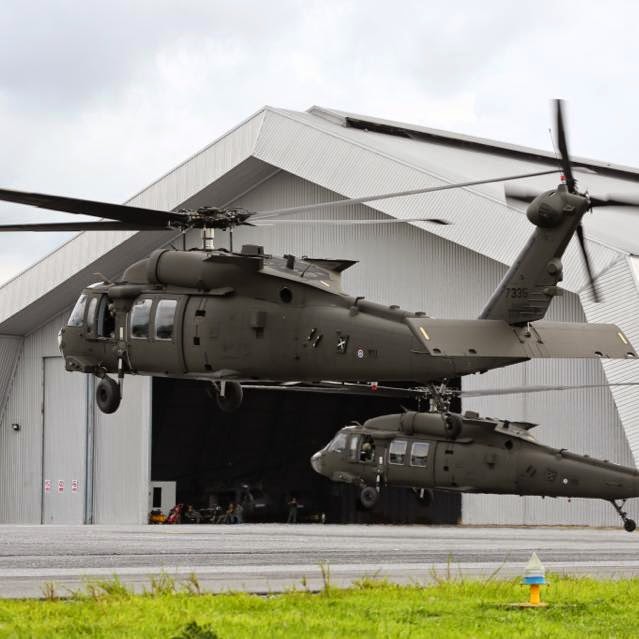Unlocking Peak Performance: UH 60 Helicopter Maintenance Overview
Unlocking Peak Performance: UH 60 Helicopter Maintenance Overview
Blog Article
Recognizing the Mechanics and Design Behind Uh 60 Helicopters
The UH-60 helicopter, generally recognized as the Black Hawk, stands as a pinnacle of contemporary rotorcraft modern technology, personifying a blend of robust engineering and intricate mechanics. From its beginning to its existing versions, the advancement of this airplane showcases a combination of development and usefulness. As we peel off back the layers of the UH-60's design, a globe of intricate systems and meticulous engineering comes to light. Comprehending the mechanics and engineering behind this functional airplane reveals a world where precision meets power, and where each element plays an important duty in achieving trip.
History of UH-60 Helicopters
The history of UH-60 helicopters traces back to the late 1970s when the United States Army looked for a functional and sophisticated energy helicopter to replace its aging fleet. In reaction to this need, the Sikorsky Airplane Firm developed the UH-60 Black Hawk helicopter. Introduced in 1979, the UH-60 promptly became a staple in military procedures due to its impressive capabilities.
The UH-60 was made to stand out in a variety of missions, consisting of troop transportation, medical evacuation, digital warfare, and special operations. Its capability to adapt to different duties made it a valuable possession to the U.S. uh 60. Army and other military pressures worldwide
Over the years, the UH-60 system has undertaken several upgrades and variants to boost its performance and equal developing mission demands. These helicopters have actually seen comprehensive service in problems such as the Gulf War, Afghanistan, and Iraq, showcasing their reliability and flexibility in diverse operational atmospheres. The UH-60's abundant history is a testament to its enduring tradition as a top energy helicopter.

Engine and Power Solutions
Using cutting-edge propulsion modern technology, UH-60 helicopters are outfitted with innovative engine and power systems to make certain ideal efficiency and dependability in a variety of operational scenarios. The UH-60, generally referred to as the Black Hawk, is powered by two General Electric T700-GE-701D engines, each capable of supplying up to 1,940 shaft horse power. These turboshaft engines give the necessary thrust for the helicopter to accomplish its goals successfully, including army transport, medical evacuation, and combat assistance.

Blades System and Aerodynamics
Just how do the rotor system and the rules of aerodynamics of UH-60 helicopters add to their operational effectiveness and flight capacities? The blades system of the UH-60 helicopter plays an essential duty in giving lift and propulsion. The UH-60 includes a four-bladed, fully verbalized rotor system that enables high maneuverability and stability during flight. This layout allows the helicopter to perform a large range of goals, from transportation and clinical discharge to fight operations.
Aerodynamics likewise play an essential duty in the performance of UH-60 helicopters. The streamlined body and rotor blade layout minimize drag, permitting the helicopter to accomplish higher speeds and far better fuel performance. The wind resistant design of the UH-60 additionally adds to its ability to run in varied environmental conditions, including high elevations and warm temperatures.
Avionics and Trip Control Equipment

In its elaborate control with the rotor system and aerodynamics of UH-60 helicopters, the avionics and flight control systems create an essential browse around this site network of technologies forming the airplane's functional capabilities. Avionics include the digital systems used for interaction, navigating, and keeping track of various aircraft functions. In the UH-60, these systems consist of digital screens, communication radios, GPS navigating, climate radar, and auto-pilot systems. These avionics systems give vital details to the pilots, improving situational understanding and making sure risk-free and reliable procedure of the helicopter.
The trip control systems of the UH-60 are in charge of converting the pilot's inputs right into the proper adjustments to the rotor moved here system, ensuring steady flight and ability to move. These systems contain hydraulic actuators, servos, and computers that collaborate to regulate the tail and primary rotors, as well as other flight control surface areas. By precisely managing the helicopter's trip characteristics, these systems allow pilots to perform a variety of objectives, from transport and search-and-rescue to fight procedures, with accuracy and self-confidence.
Function and Applications in Aviation
Avionics systems in UH-60 helicopters encompass a range of electronic systems that aid in navigation, interaction, monitoring, and managing numerous aircraft functions. These systems include digital display screens, autopilot systems, communication radios, General practitioner navigation tools, and weather condition radar. Additionally, these systems include safety and security features such as autopilot settings, terrain awareness cautioning systems, and security augmentation systems to boost the total safety and security and functional abilities of the UH-60 helicopters in numerous goals, consisting of army transport, clinical evacuation, search and rescue, and aerial firefighting.
Final Thought
In final Recommended Site thought, the UH-60 helicopter is a functional aircraft with a rich history and advanced design. Its engine and power systems, blades system, aerodynamics, avionics, and flight control systems all work with each other to make it a dependable and efficient equipment.
In its elaborate control with the blades system and the rules of aerodynamics of UH-60 helicopters, the avionics and trip control systems develop a crucial network of technologies shaping the aircraft's functional capabilities.The flight control systems of the UH-60 are responsible for translating the pilot's inputs into the proper modifications to the blades system, ensuring secure trip and maneuverability. Avionics systems in UH-60 helicopters incorporate a variety of digital systems that help in navigating, communication, monitoring, and regulating different aircraft features. In addition, these systems integrate security features such as auto-pilot modes, surface understanding alerting systems, and security augmentation systems to enhance the overall safety and functional capabilities of the UH-60 helicopters in different objectives, consisting of army transportation, clinical discharge, search and rescue, and aerial firefighting.
Its engine and power systems, rotor system, aerodynamics, avionics, and trip control systems all function with each other to make it a dependable and efficient device.
Report this page